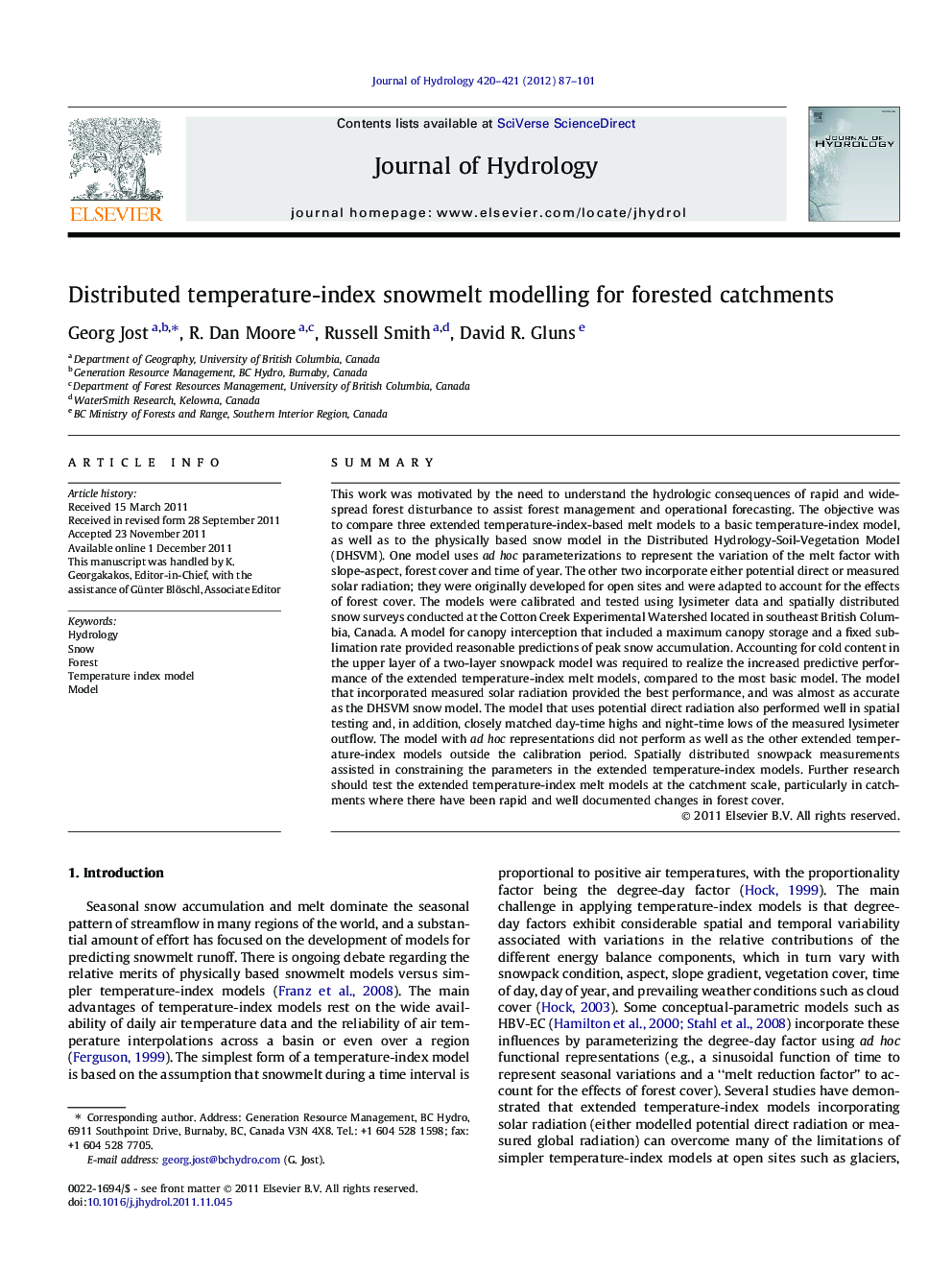| کد مقاله | کد نشریه | سال انتشار | مقاله انگلیسی | نسخه تمام متن |
|---|---|---|---|---|
| 4577157 | 1630001 | 2012 | 15 صفحه PDF | دانلود رایگان |

SummaryThis work was motivated by the need to understand the hydrologic consequences of rapid and widespread forest disturbance to assist forest management and operational forecasting. The objective was to compare three extended temperature-index-based melt models to a basic temperature-index model, as well as to the physically based snow model in the Distributed Hydrology-Soil-Vegetation Model (DHSVM). One model uses ad hoc parameterizations to represent the variation of the melt factor with slope-aspect, forest cover and time of year. The other two incorporate either potential direct or measured solar radiation; they were originally developed for open sites and were adapted to account for the effects of forest cover. The models were calibrated and tested using lysimeter data and spatially distributed snow surveys conducted at the Cotton Creek Experimental Watershed located in southeast British Columbia, Canada. A model for canopy interception that included a maximum canopy storage and a fixed sublimation rate provided reasonable predictions of peak snow accumulation. Accounting for cold content in the upper layer of a two-layer snowpack model was required to realize the increased predictive performance of the extended temperature-index melt models, compared to the most basic model. The model that incorporated measured solar radiation provided the best performance, and was almost as accurate as the DHSVM snow model. The model that uses potential direct radiation also performed well in spatial testing and, in addition, closely matched day-time highs and night-time lows of the measured lysimeter outflow. The model with ad hoc representations did not perform as well as the other extended temperature-index models outside the calibration period. Spatially distributed snowpack measurements assisted in constraining the parameters in the extended temperature-index models. Further research should test the extended temperature-index melt models at the catchment scale, particularly in catchments where there have been rapid and well documented changes in forest cover.
► We adapt extended temperature-index snowmelt algorithms for forested catchments.
► A simple model for canopy interception reasonably predicts snow accumulation.
► Extended temperature-index algorithms can be as accurate as an energy balance model.
► Accounting for cold-content was required to realize the increased performance.
► One algorithm is also capable of simulating the diurnal cycle of meltwater outflow.
Journal: Journal of Hydrology - Volumes 420–421, 14 February 2012, Pages 87–101